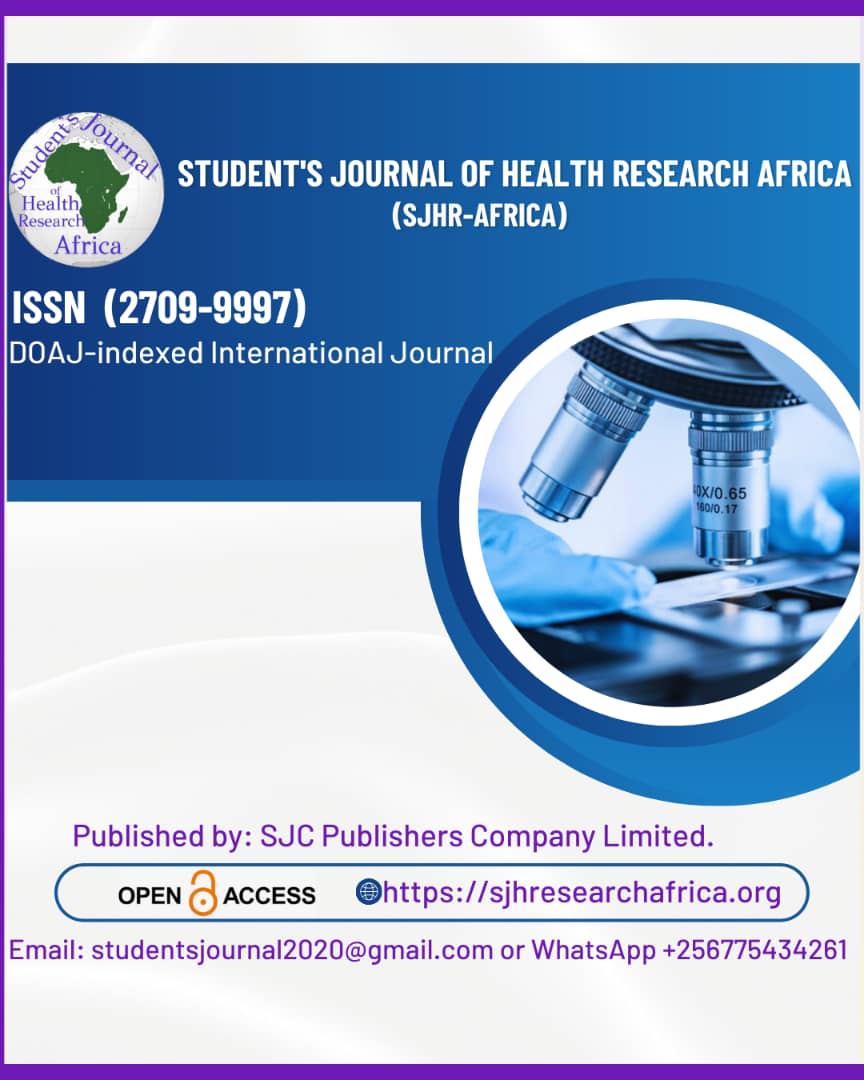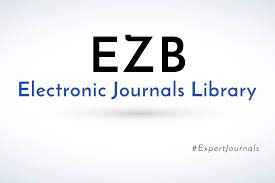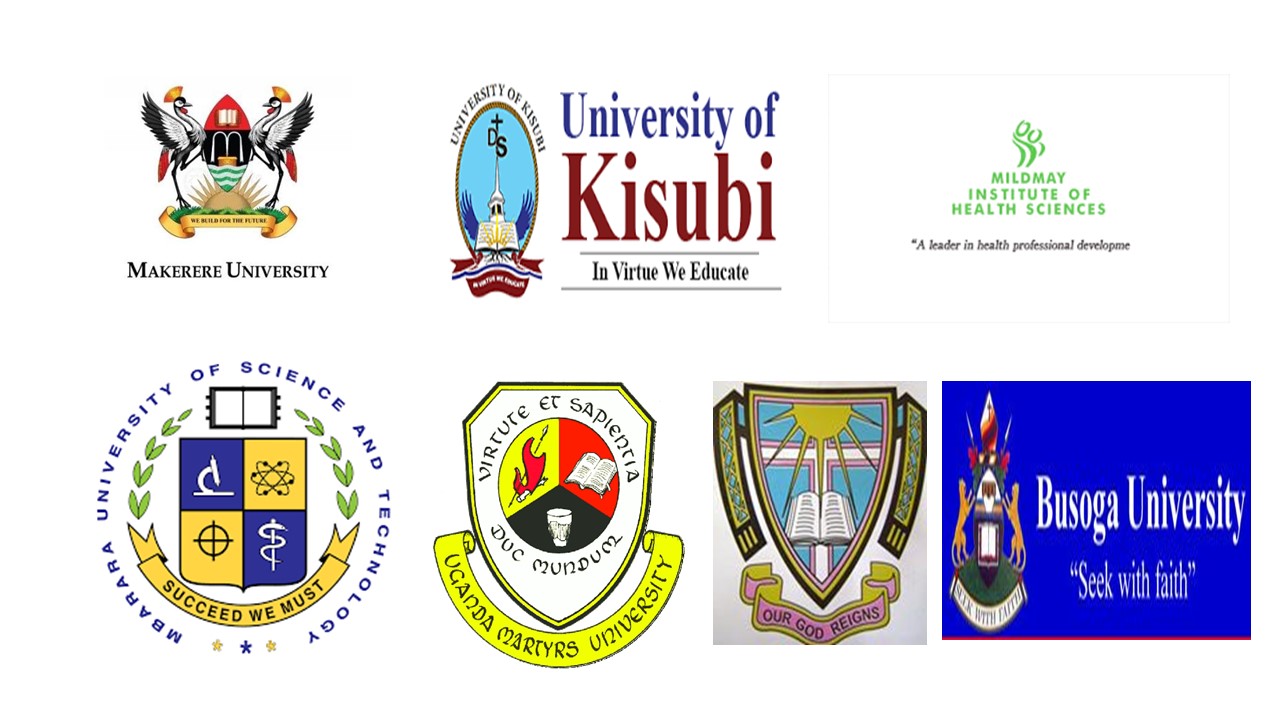ASSESSING THE IMPACT OF GLYCAEMIC CONTROL ON LIVER FUNCTION IN TYPE 2 DIABETES: A CROSS-SECTIONAL RETROSPECTIVE ANALYSIS OF LIVER CHEMISTRIES
DOI:
https://doi.org/10.51168/sjhrafrica.v6i3.1565Keywords:
Type 2 Diabetes Mellitus, liver biomarkers, Glycaemia Control, Non-Alcoholic Fatty Liver Disease, Glycated Hemoglobin, Alanine Transaminase, Aspartate Transaminase, Gamma-Glutamyl TransferaseAbstract
Objective
This study investigates the relationship between liver biomarkers and glycaemic control in Type 2 Diabetes Mellitus (T2DM) patients at King Edward Hospital, KwaZulu-Natal, South Africa.
Methods
A retrospective, cross-sectional study was conducted on 80 patients diagnosed with T2DM. Data collected included gender distribution, age range, glycaemic control (HbA1c, fasting glucose, and random glucose), and liver function markers (bilirubin, ALT, AST, and GGT). The study period ranged from June 2023 to December 2023. Patients were evaluated for glycaemic control and liver biomarkers, and statistical analysis was performed to explore correlations between these factors.
Results
The majority of patients (57.5%) were aged 46-65, with an emerging trend of younger patients being diagnosed with T2DM. A significant gender disparity was observed, with females comprising 83.8% of the study population. All participants exhibited HbA1c levels in the diabetic range (≥6.5%), indicating poor glycaemic control. A notable proportion of patients showed elevated liver enzymes: 35.7% had mildly elevated ALT levels, 29.6% had elevated AST levels, and 75.2% had abnormal GGT levels. Positive and significant correlations were found between HbA1c and liver enzymes: HbA1c and ALT (r = 0.43, p < 0.01), HbA1c and AST (r = 0.51, p < 0.01), and HbA1c and GGT (r = 0.61, p < 0.01). These findings suggest that poor glycaemic control is strongly associated with liver dysfunction.
Conclusion
The results indicate a strong association between poor glycaemic control and elevated liver enzymes in T2DM patients, highlighting the need for comprehensive management strategies targeting both glycaemic control and liver health. Regular monitoring of liver biomarkers should be considered to facilitate early detection of liver dysfunction, potentially preventing severe liver-related complications.
Recommendations
Regular liver function monitoring should be integrated into diabetes management, particularly for the early detection of conditions like NAFLD. Improving glycaemic control is crucial to mitigate liver-related complications.
References
Abebe, G. et al. (2022) ‘Assessment of fatty liver and its correlation with glycemic control in patients with type 2 diabetes mellitus attending Dessie Comprehensive Specialized Hospital, Northeast Ethiopia’, SAGE Open Medicine, 10, p. 20503121221124762. Available at: https://doi.org/10.1177/20503121221124762.
Allameh, A. et al. (2023) ‘Oxidative Stress in Liver Pathophysiology and Disease’, Antioxidants, 12(9), p. 1653. Available at: https://doi.org/10.3390/antiox12091653.
Alrashed, F.A. et al. (2024) ‘Exploring determinants of sex and family history-based disparity in type 2 diabetes mellitus prevalence among clinical patients’, BMC Public Health, 24(1), p. 682. Available at: https://doi.org/10.1186/s12889-024-18170-0.
Arvanitakis, K. et al. (2024) ‘Management of type 2 diabetes in patients with compensated liver cirrhosis: Short of evidence, plenty of potential’, Diabetes & Metabolic Syndrome: Clinical Research & Reviews, 18(1), p. 102935. Available at: https://doi.org/10.1016/j.dsx.2023.102935.
Bertolini, A., Fiorotto, R. and Strazzabosco, M., 2022, July. Bile acids and their receptors: modulators and therapeutic targets in liver inflammation. In Seminars in immunopathology (Vol. 44, No. 4, pp. 547-564). Berlin/Heidelberg: Springer Berlin Heidelberg.
Björkström, K. et al. (2019) ‘Risk Factors for Severe Liver Disease in Patients With Type 2 Diabetes’, Clinical Gastroenterology and Hepatology, 17(13), pp. 2769-2775.e4. Available at: https://doi.org/10.1016/j.cgh.2019.04.038.
Bril, F. and Cusi, K. (2016) ‘Nonalcoholic Fatty Liver Disease’, Endocrinology and Metabolism Clinics of North America, 45(4), pp. 765–781. Available at: https://doi.org/10.1016/j.ecl.2016.06.005.
Caturano, A. et al. (2023) ‘Oxidative Stress in Type 2 Diabetes: Impacts from Pathogenesis to Lifestyle Modifications’, Current Issues in Molecular Biology, 45(8), pp. 6651–6666. Available at: https://doi.org/10.3390/cimb45080420.
Chauke, M.M., 2023. Possible correlations between HbA1c and selected modifiable risk factors for type 2 diabetes mellitus in a non-diabetic population. University of Johannesburg (South Africa).
Ciarambino, T. et al. (2022) ‘Influence of Gender in Diabetes Mellitus and Its Complication’, International Journal of Molecular Sciences, 23(16), p. 8850. Available at: https://doi.org/10.3390/ijms23168850.
Dharmalingam, M. and Yamasandhi, Pg. (2018a) ‘Nonalcoholic fatty liver disease and Type 2 diabetes mellitus’, Indian Journal of Endocrinology and Metabolism, 22(3), p. 421. Available at: https://doi.org/10.4103/ijem.IJEM_585_17.
Dharmalingam, M. and Yamasandhi, Pg. (2018b) ‘Nonalcoholic fatty liver disease and Type 2 diabetes mellitus’, Indian Journal of Endocrinology and Metabolism, 22(3), p. 421. Available at: https://doi.org/10.4103/ijem.IJEM_585_17.
Ganju, A., Goulart, A.C., Ray, A., Majumdar, A., Jeffers, B.W., Llamosa, G., Cañizares, H., Ramos-Cañizares, I.J., Fadhil, I., Subramaniam, K. and Lim, L.L., 2020. Systemic solutions for addressing non-communicable diseases in low-and middle-income countries. Journal of multidisciplinary healthcare, pp.693-707.
Garcia-Compean, D., Jaquez-Quintana, J.O., Gonzalez-Gonzalez, J.A. and Maldonado-Garza, H., 2009. Liver Cirrhosis and Diabetes: Risk Factors, Pathophysiology, Clinical Implications, and Management. World Journal of Gastroenterology, 15, pp.280-288. Available at: https://doi.org/10.3748/wjg.15.280.
Hantzidiamantis, P.J., Awosika, A.O. and Lappin, S.L., 2024. Physiology, glucose. In StatPearls [Internet]. StatPearls Publishing.
Hantzidiamantis, P.J., Awosika, A.O. and Lappin, S.L., 2024. Physiology, glucose. In StatPearls [Internet]. StatPearls Publishing.
Hazlehurst, J.M. et al.. (2016) ‘Non-alcoholic fatty liver disease and diabetes’, Metabolism, 65(8), pp. 1096–1108. Available at: https://doi.org/10.1016/j.metabol.2016.01.001.
Kautzky-Willer, A., Leutner, M. and Harreiter, J. (2023) ‘Sex differences in type 2 diabetes’, Diabetologia, 66(6), pp. 986–1002. Available at: https://doi.org/10.1007/s00125-023-05891-x.
Ko, S.-H. and Kim, H.-S. (2020) ‘Menopause-Associated Lipid Metabolic Disorders and Foods Beneficial for Postmenopausal Women’, Nutrients, 12(1), p. 202. Available at: https://doi.org/10.3390/nu12010202.
Kolb, H., Kempf, K. and Martin, S. (2023) ‘Insulin and aging – a disappointing relationship’, Frontiers in Endocrinology, 14, p. 1261298. Available at: https://doi.org/10.3389/fendo.2023.1261298.
Kwak, J., Seo, I.-H. and Lee, Y.-J. (2023) ‘Serum γ-glutamyltransferase level and incidence risk of metabolic syndrome in community-dwelling adults: longitudinal findings over 12 years’, Diabetology & Metabolic Syndrome, 15(1), p. 29. Available at: https://doi.org/10.1186/s13098-023-01000-5.
Lala, V., Zubair, M. and Minter, D. (2023) ‘Liver function tests’, StatPearls [Preprint].
Lala, V., Zubair, M. and Minter, D., 2023. Liver function tests. StatPearls.
Lee, S.Y., Sung, E. and Chang, Y. (2013) ‘Elevated Serum Gamma-Glutamyltransferase Is a Strong Marker of Insulin Resistance in Obese Children’, International Journal of Endocrinology, 2013, pp. 1–6. Available at: https://doi.org/10.1155/2013/578693.
Lindenmeyer, C.C. and McCullough, A.J. (2018) ‘The Natural History of Nonalcoholic Fatty Liver Disease—An Evolving View’, Clinics in Liver Disease, 22(1), pp. 11–21. Available at: https://doi.org/10.1016/j.cld.2017.08.003.
Magliano, D.J. and Boyko, E.J. (2021) ‘IDF Diabetes Atlas 10th edition scientific committee’, IDF DIABETES ATLAS [Internet]. 10th ed. Brussels: International Diabetes Federation, p. 35914061.
Mandal, A. et al. (2018) ‘Elevated Liver Enzymes in Patients with Type 2 Diabetes Mellitus and Non-alcoholic Fatty Liver Disease’, Cureus [Preprint]. Available at: https://doi.org/10.7759/cureus.3626.
Mohamed, J. et al. (2016) ‘Mechanisms of Diabetes-Induced Liver Damage: The role of oxidative stress and inflammation’, Sultan Qaboos University Medical Journal, 16(2), pp. e132 -141. Available at: https://doi.org/10.18295/squmj.2016.16.02.002.
Mohamed, J., Nafizah, A.N., Zariyantey, A.H. and Budin, S., 2016. Mechanisms of diabetes-induced liver damage: the role of oxidative stress and inflammation. Sultan Qaboos University medical journal, 16(2), p.e132.
Motlani, V. et al. (2023) ‘Changed Endocrinology in Postmenopausal Women: A Comprehensive View’, Cureus [Preprint]. Available at: https://doi.org/10.7759/cureus.51287.
Mu, W. et al. (2019) ‘Potential Nexus of Non-alcoholic Fatty Liver Disease and Type 2 Diabetes Mellitus: Insulin Resistance Between Hepatic and Peripheral Tissues’, Frontiers in Pharmacology, 9, p. 1566. Available at: https://doi.org/10.3389/fphar.2018.01566.
Nogueira, J.P. and Cusi, K. (2024) ‘Role of Insulin Resistance in the Development of Nonalcoholic Fatty Liver Disease in People With Type 2 Diabetes: From Bench to Patient Care’, Diabetes Spectrum, 37(1), pp. 20–28. Available at: https://doi.org/10.2337/dsi23-0013.
Otero Sanchez, L. et al. (2024) ‘Exploring the links between type 2 diabetes and liver‐related complications: A comprehensive review’, United European Gastroenterology Journal, 12(2), pp. 240–251. Available at: https://doi.org/10.1002/ueg2.12508.
Otero Sanchez, L., Chen, Y., Lassailly, G. and Qi, X., 2024. Exploring the links between type 2 diabetes and liver‐related complications: a comprehensive review. United European Gastroenterology Journal, 12(2), pp.240-251.
Pappachan, J.M., Fernandez, C.J. and Ashraf, A.P. (2024) ‘Rising tide: The global surge of type 2 diabetes in children and adolescents demands action now’, World Journal of Diabetes, 15(5), pp. 797–809. Available at: https://doi.org/10.4239/wjd.v15.i5.797.
Qadri, S. and Yki-Järvinen, H. (2024) ‘Surveillance of the liver in type 2 diabetes: important but unfeasible?’, Diabetologia, 67(6), pp. 961–973. Available at: https://doi.org/10.1007/s00125-024-06087-7.
Rohm, T.V. et al. (2022) ‘Inflammation in obesity, diabetes, and related disorders’, Immunity, 55(1), pp. 31–55. Available at: https://doi.org/10.1016/j.immuni.2021.12.013.
Saeedi, P. et al. (2019) ‘Global and regional diabetes prevalence estimates for 2019 and projections for 2030 and 2045: Results from the International Diabetes Federation Diabetes Atlas, 9th edition’, Diabetes Research and Clinical Practice, 157, p. 107843. Available at: https://doi.org/10.1016/j.diabres.2019.107843.
Sartore, G. et al. (2023) ‘Long-term HbA1c variability and macro-/micro-vascular complications in type 2 diabetes mellitus: a meta-analysis update’, Acta Diabetologica, 60(6), pp. 721–738. Available at: https://doi.org/10.1007/s00592-023-02037-8.
Yahaya, J.J. et al. (2023) ‘Poor glycemic control and associated factors among patients with type 2 diabetes mellitus: a cross-sectional study’, Scientific Reports, 13(1), p. 9673. Available at: https://doi.org/10.1038/s41598-023-36675-3.
Younossi, Z.M. (2018) ‘The epidemiology of nonalcoholic steatohepatitis’, Clinical Liver Disease, 11(4), pp. 92–94. Available at: https://doi.org/10.1002/cld.710.
Downloads
Published
How to Cite
Issue
Section
License
Copyright (c) 2025 Nokukhanya Thembane, Ziningi Nobuhle Jaya , Londeka Nontobeko Ndaba

This work is licensed under a Creative Commons Attribution-NonCommercial-NoDerivatives 4.0 International License.






















